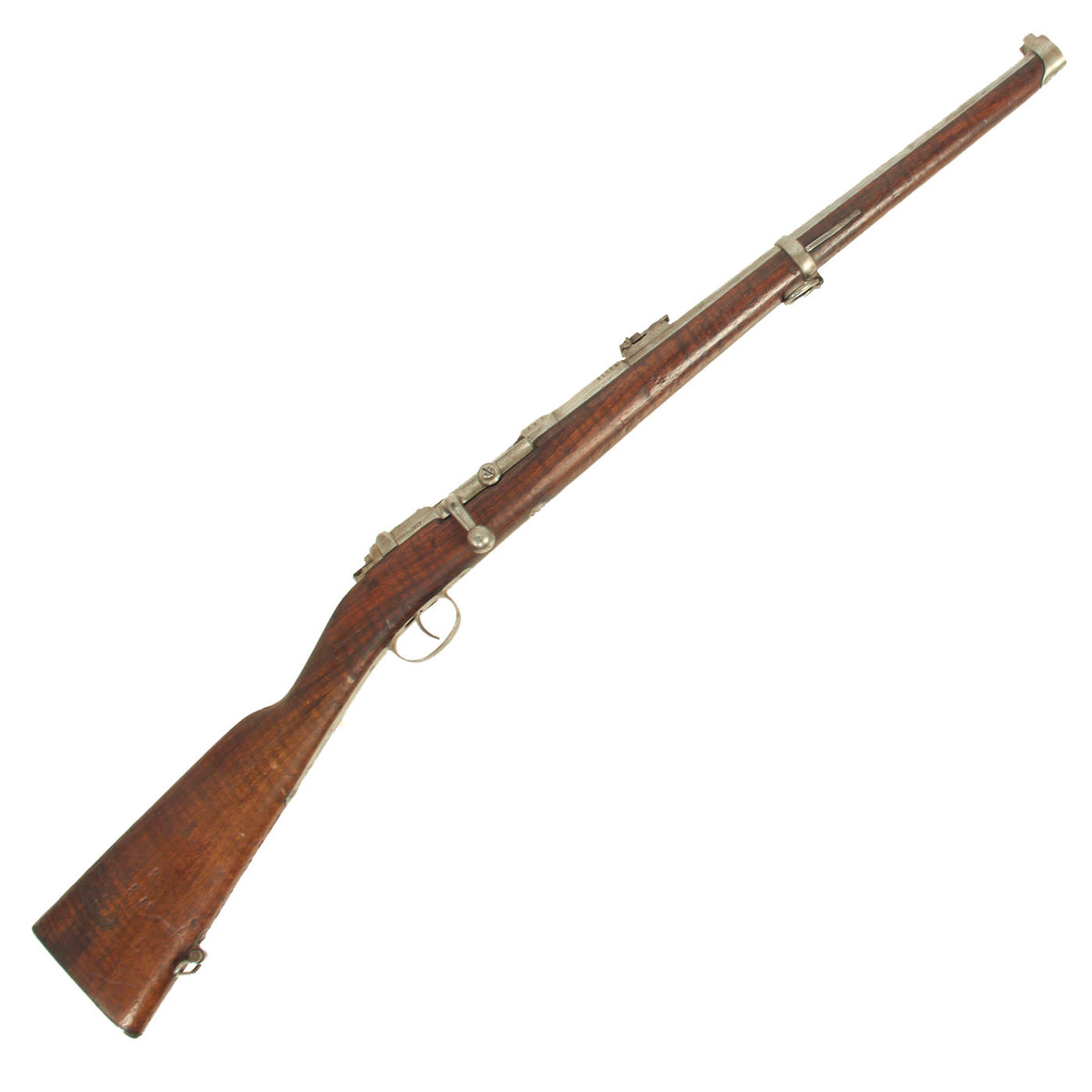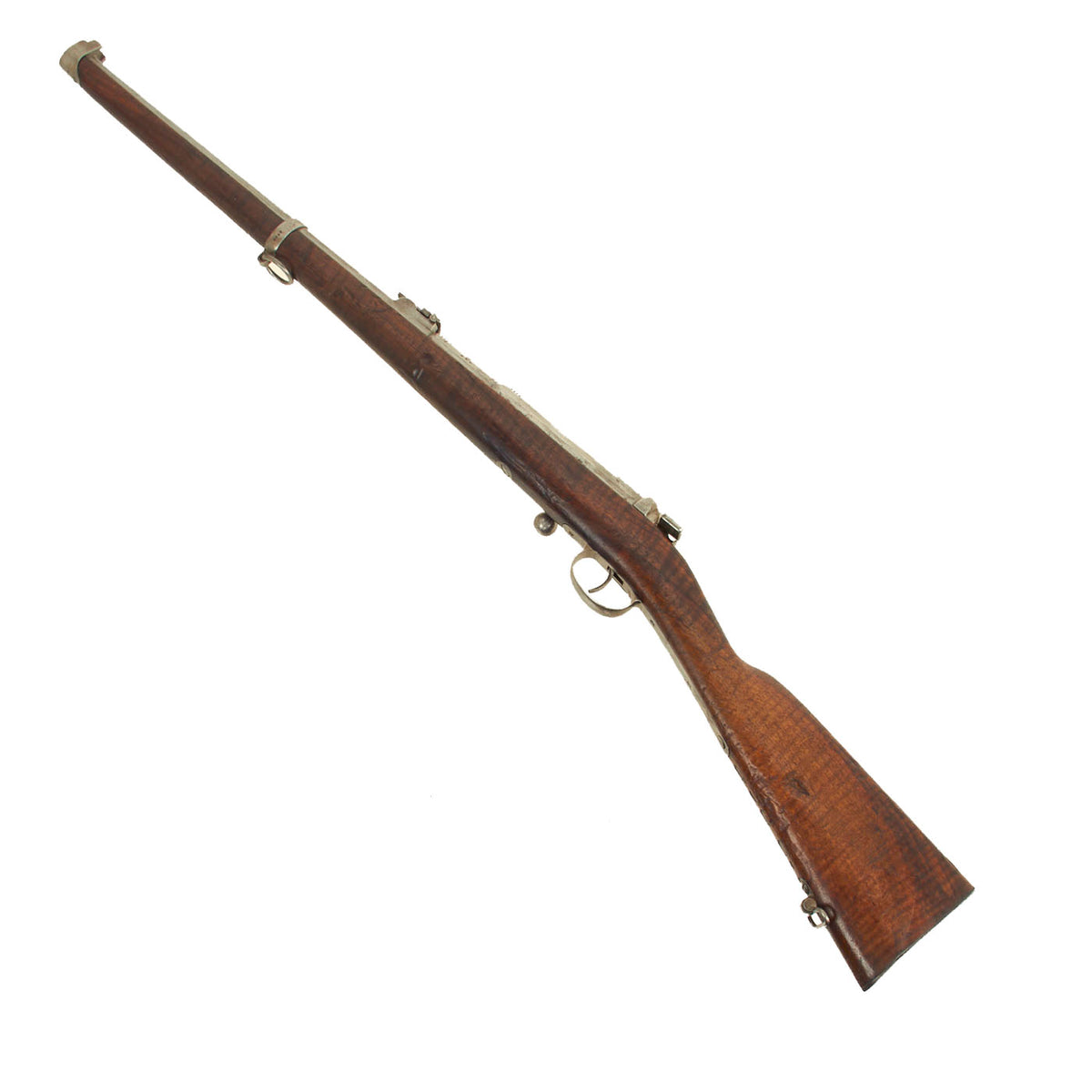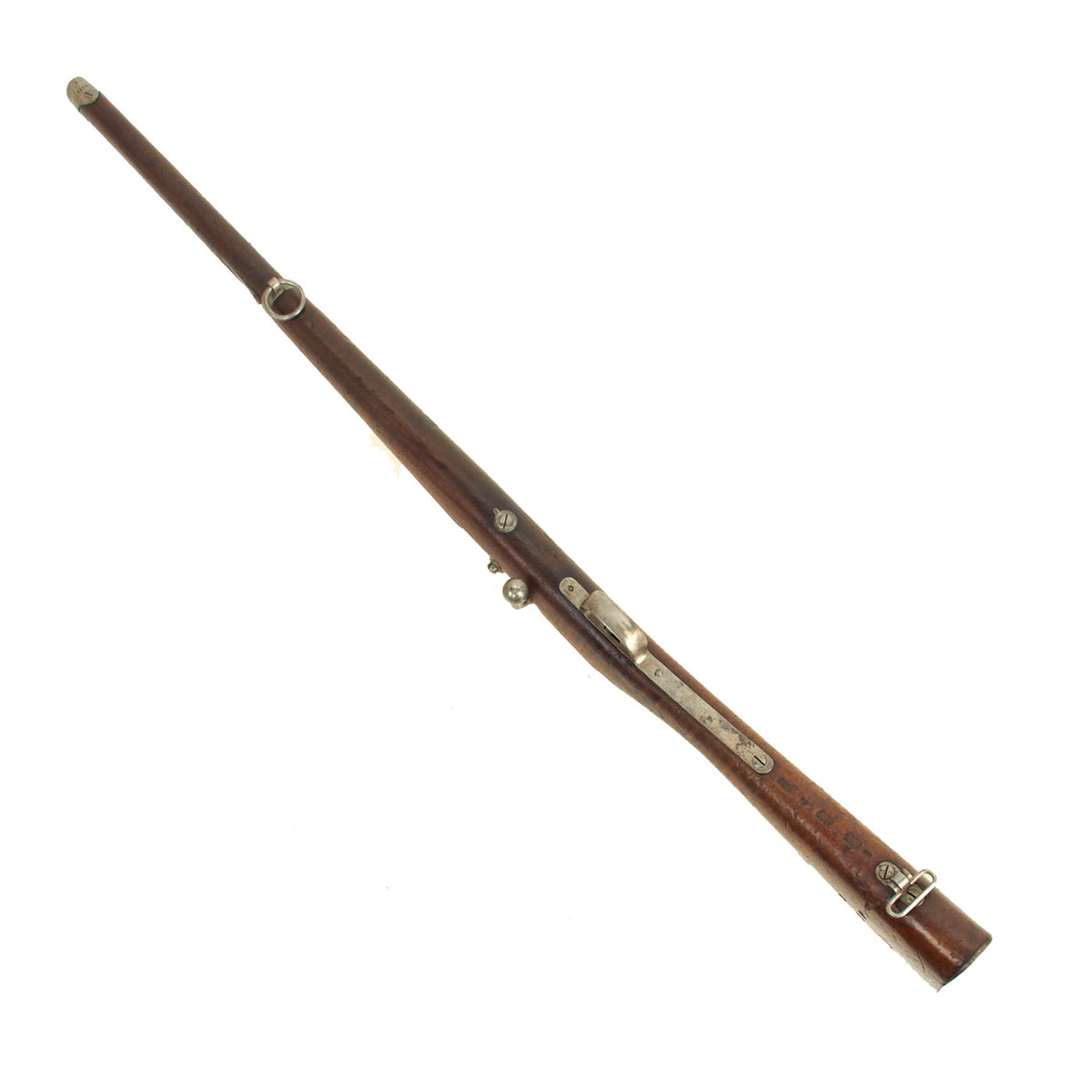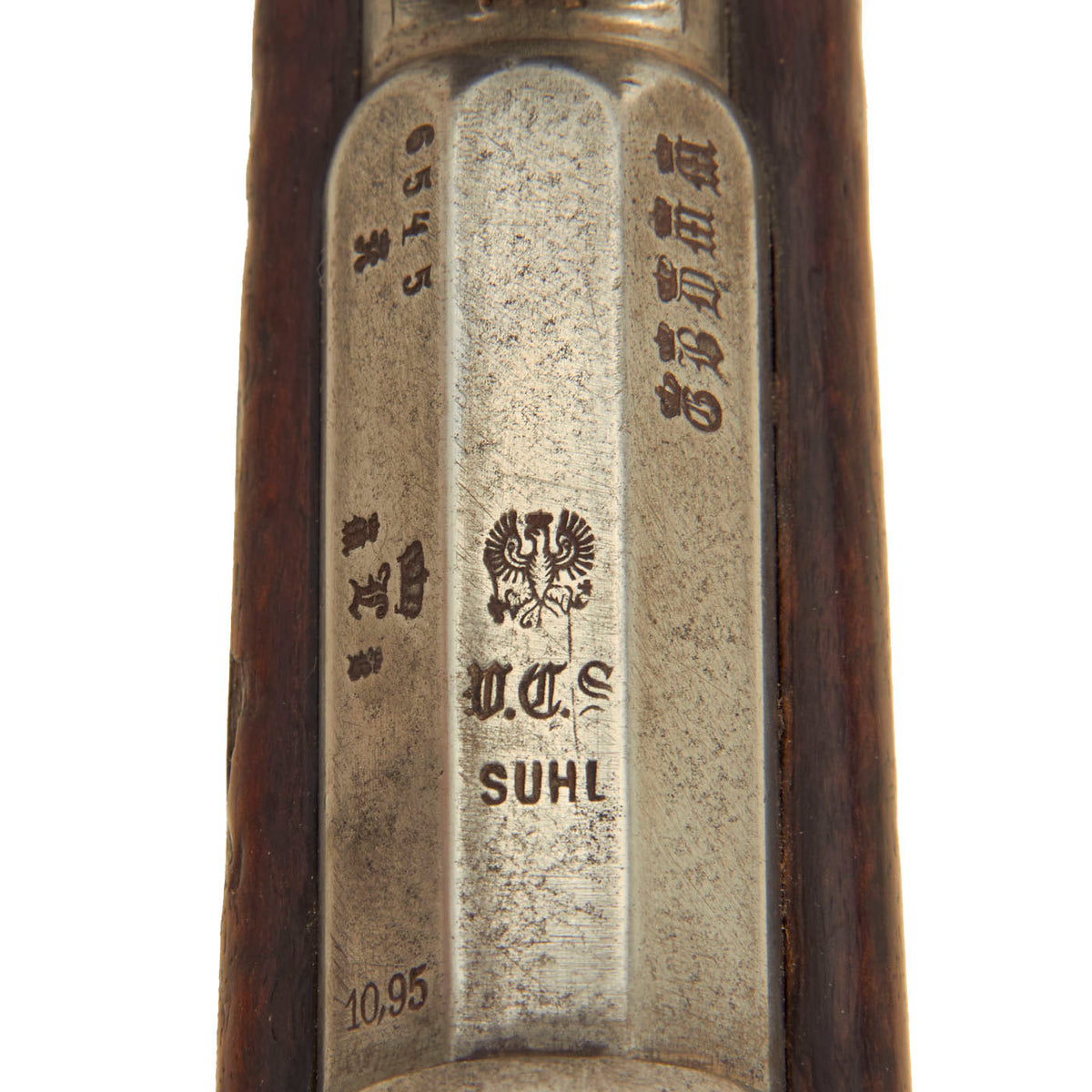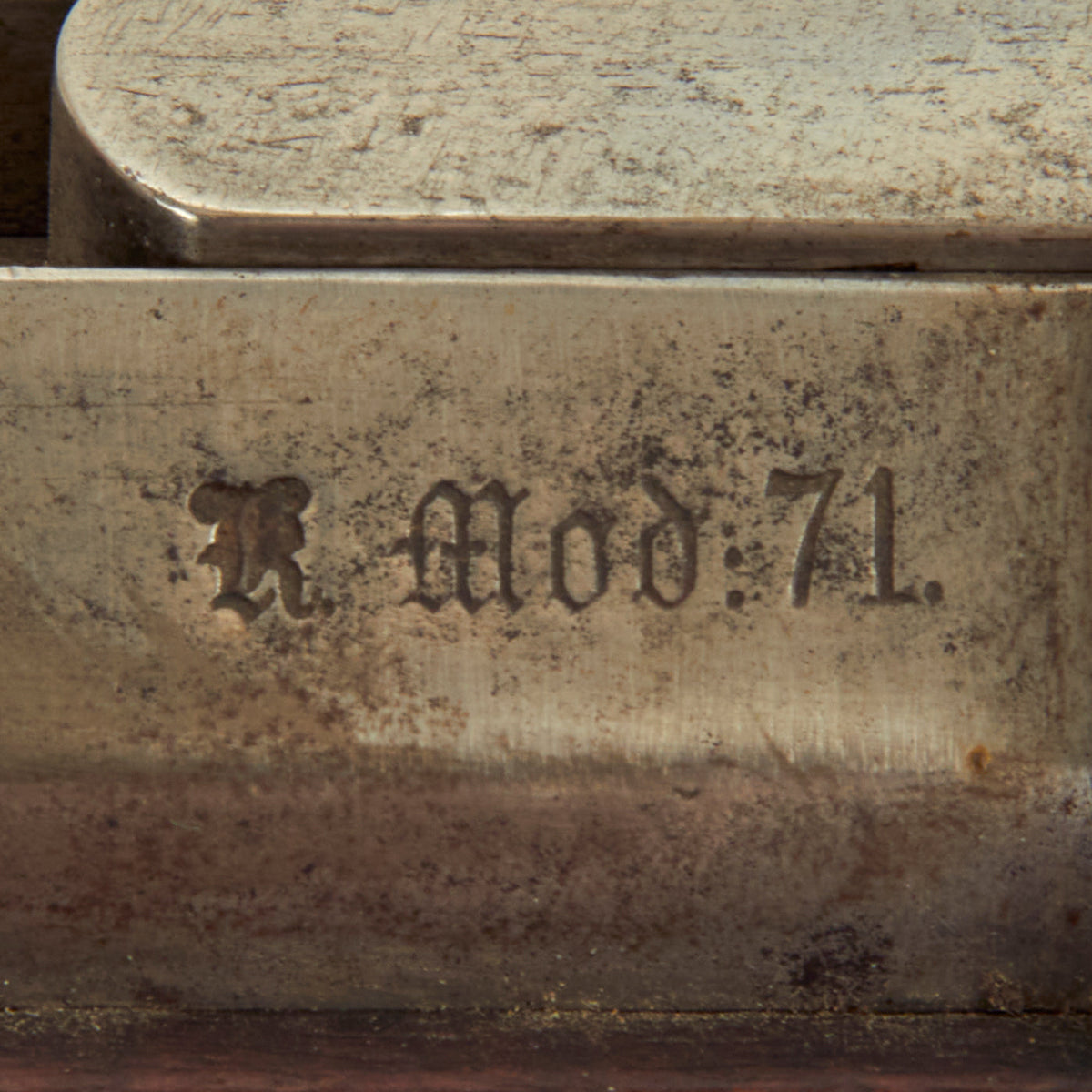Original German Mauser Model K.1871 Carbine by V.C. Schilling of Suhl with Bavarian Markings Dated 1877 & 1882 – Serial 6545 Original Items
$ 1.595,00 $ 398,75
Original Item: Only One Available. This is a very nice example of the Mauser Karabiner (Carbine) Model 1871, manufactured by V.C. Schilling of Suhl. These shorter versions are harder to find, and were intended for use by cavalry and lancers. It is covered with Imperial German inspection and acceptance markings, standard for these carbines. The serial number 6545 appears on the barrel and receiver, while the other serial numbers are all unmatching. This means it was almost certainly refit at arsenal at least once, and had parts from other carbines used to replace damaged parts.
The receiver is dated 1877 as well as 1882, which may be when it was returned to arsenal for a refit. The other side of the receiver is marked K. Mod. 71 on the opposite side in German “Black Letter” type. This stands for Karabiner (Carbine) Model 71. The top of the barrel nocks form is with the Imperial Eagle over V. C. S. / SUHL, the abbreviation for V.C. Schilling of Suhl in Thuringia, Germany. This company made both firearms and edged weapons under contract to various kingdoms in the German empire, and were also part of the “Suhl Consortium” of firearms makers. Below this on the left side is the Crown over L proof for Ludwig II of Bavaria, often called the “Swan King” or “The Fairy Tail King.” He reigned from 1864 until his very suspicious death in 1886.
The butt plate bears a somewhat faded regimental marking on the rear, which reads B. 1. T. B. 171., for the 1st Royal Bavarian Train Battalion, weapon 171. This unit was part of the I Royal Bavarian Army Corps (I. Königlich Bayerisches Armee-Korps), a corps level command set up in Munich during 1869 as part of military reforms. The train battalion was responsible for the supply chain and its protection. As many would be mounted on horses, a Cavalry Carbine would be exactly the type of arm they were equipped with.
Our example is in a nice preserved condition, with a worn polished bright patina on all of the metalwork, which had made some of the markings a bit faint. The bore is in very good condition, with a mostly bright finish and clear lands and grooves. There was definitely some past oxidation and fouling, now cleaned away. The stock shows the usual dents and scratches from long service, however the cartouches are still crisp, so it does not look to have been arsenal reconditioned. It has a lovely brown color, and has ‘tiger flame’ figuring from butt stock to nose cap! Definitely a beautiful example! It retains the front sling ring and rear swivel, which allowed the carbine to be used single handed when equipped with the right sling.
Overall this is an very nice example of a service used German Mauser model 1871 Carbine with some great Bavarian Markings. The perfect addition to any German Mauser collection!
Specifications:-
Year of Manufacture: 1877
Caliber: 11x60mmR Mauser
Cartridge Type: Centerfire Cartridge
Barrel Length: 20 inches
Overall Length: 39 1/4 Inches
Action type: Bolt-Action
Feed System: Single Shot
History of the Mauser 1871
Adopted as the Gewehr 71 or Infanterie-Gewehr 71, or “Infantry Rifle 71 (“I.G.Mod.71” was stamped on the rifles themselves) was the first rifle model in a distinguished line designed and manufactured by Paul Mauser and Wilhelm Mauser of the Mauser company and later mass-produced at Spandau arsenal.
Paul Mauser developed his bolt-action rifle from 1866 to 1871. During 1870-71 trials with many different rifles took place, with the “M1869 Bavarian Werder” being the Mausers’ chief competitor. The Mauser was provisionally adopted on 2 December 1871, pending the development of an appropriate safety. With support from the government’s Spandau arsenal, the improvements to the safety mechanism were completed and the rifle was formally accepted on 14 February 1872 as Infantry Rifle Model 1871 by the German Empire excluding Bavaria. The action was not based on its predecessor, the Dreyse needle gun which had seen service during the Franco-Prussian War of 1870-71, and which was found to have a number of weaknesses.
The now well known Mauser “wing” type safety lever was developed for the Gewehr 71. The Gewehr 71 is a conventional looking bolt action chambered in 11mm using black powder cartridges. The action included only a bolt guide rib as its single locking lug, locking forward of the receiving bridge. The original design was a single-shot. The design was updated in 1884 with an 8-round tubular magazine designed by Alfred von Kropatschek, making this Germany’s first repeating rifle. This version was designated the Gewehr 1871/84. A version of this repeater was adopted by the Ottoman Empire. Designated the M1887, it differentiated from the M71/84 in that it had a side mounted cleaning rod, a second locking lug on the rear of the bolt, and it was in caliber 9.5×60mmR, which Paul Mauser touted as the most efficient (black powder) cartridge. In the early 20th century a few were converted to 7.65×53mm smokeless by the arsenal in Ankara.
NOTE: International orders of antique firearms MUST be shipped using UPS WW Services (courier). USPS Priority Mail international will not accept these. International customers should always consult their country’s antique gun laws prior to ordering.
Fast Shipping with Professional Packaging
Thanks to our longstanding association with UPS FedEx DHL, and other major international carriers, we are able to provide a range of shipping options. Our warehouse staff is expertly trained and will wrap your products according to our exact and precise specifications. Prior to shipping, your goods will be thoroughly examined and securely secured. We ship to thousands clients each day across multiple countries. This shows how we're dedicated to be the largest retailer on the internet. Warehouses and distribution centres can be located throughout Europe as well as the USA.
Note: Orders with more than one item will be assigned a processing date depending on the item.
Before shipping before shipping, we'll conduct a thorough inspection of the items you have ordered. Today, the majority of orders will be delivered within 48 hours. The delivery time will be between 3-7 days.
Returns
The stock is dynamic and we cannot completely manage it because multiple stakeholders are involved, including our factory and warehouse. So the actual stock may alter at any time. It's possible that you may not receive your order once the order has been made.
Our policy is valid for a period of 30 days. If you don't receive the product within 30 days, we are not able to issue a refund or an exchange.
You can only return an item if it is unused and in the same state as the day you received it. You must have the item in its original packaging.
Related products
Uncategorized
Uncategorized
Uncategorized
Uncategorized
Uncategorized
Uncategorized
Uncategorized
Uncategorized
Uncategorized
Uncategorized
Uncategorized
Uncategorized
Uncategorized
Uncategorized
Uncategorized
Band of Brothers ORIGINAL GERMAN WWII Le. F.H. 18 10.5cm ARTILLERY PIECE Original Items
Uncategorized
Uncategorized
Uncategorized
Uncategorized
Armored Burgonet Helmet & Polearm from Scottish Castle Leith Hall Circa 1700 Original Items
Uncategorized
Uncategorized
